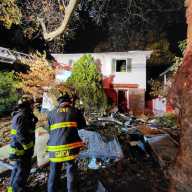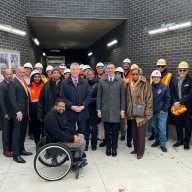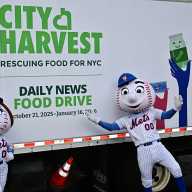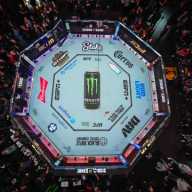Local dealerships experienced a mad dash over the weekend by buyers who wanted to trade in their gas-guzzler for a new, more fuel efficient car.
The impressive showroom foot traffic came with the announcement on the afternoon of Thursday, August 20 that the “Cash for Clunkers” program would end on Monday, August 24 at 8 p.m. because the $3 billion that the federal government had allotted for the program ran out.
“Sales were insane! We were selling cars every 10 minutes,” said Brian Benstock, general manager and vice president of Paragon Automotive in New York, about their Honda dealership on Northern Boulevard. “This was our best weekend ever! Including at the height of a booming economy, and in the roaring ‘80s, and I’ve been here 27 years.”
Over three days, from Saturday to Monday, Paragon Honda sold 206 new vehicles – that’s 37.5 percent of their combined average monthly sale of 550 new and used cars, which is roughly 18 cars a day. With the cash for clunkers incentive, they sold 900 new cars in a month at an average of 30 a day. And their used car business increased by 50 percent.
“The government program proved one thing. Create value and you can always find business. Instantly the public responded,” he said.
According to Greater New York Automobiles Dealers Association President Mark Schienberg, over 600,000 new vehicles were sold across the county and a tremendous amount in New York.
“It has not been an easy program to navigate, and most dealers are still waiting to get paid and approved,” said Schienberg. “But, as far as new vehicle traffic is concerned, it’s generated tremendous sales.”
Approved by the federal government on June 24, the Cash Allowance Rebate System (CARS), or cash for clunkers program, provided $1 billion in cash incentives of up to $4,500 to the American public to trade in their “clunker,” that is a car that gets less than 18 miles-per-gallon (mpg) and is under 25 years old, for a new, more fuel-efficient vehicle.
However, the program did not take off until July 24 and immediately car buyers responded. Within a week, the initial money ran out. This prompted the Senate to approve another $2 billion.
But on Thursday, August 20, the U.S. Secretary of Transportation Ray LaHood announced that the program would not receive anymore cash from the government and would end the following week.
“This program has been a lifeline to the automobile industry, jump starting a major sector of the economy and putting people back to work,” said LaHood, whose agency had calculated that up to that Thursday more than 457,000 dealer transactions worth $1.9 billion in rebates. “At the same time, we’ve been able to take old polluting cars off the road and help consumers purchase fuel efficient vehicles.”
Secretary LaHood said the Monday night end date allowed car dealers and buyers plenty of time to finalize purchases and submit applications for rebate from the remainder of the $3 billion provided by Congress.
Based on conservative estimates of valid transactions so far, DOT analysts projected that there was enough money to continue accepting submissions until the Monday deadline.
The fact that the government will focus on processing the incredible number of transactions that the www.cars.gov website received during the last month should come as a relief for the local dealerships that had given buyers the rebates before the government reimbursed them.
Douglas Filardo, manager of Star Suburu in Bayside, said the government owed his dealership $200,000 for the 107 cars they processed over the month. Star Suburu saw sales double. These unprecedented sales caused them to run out of cars and they won’t have any for another 30 days.
As a result, Star Suburu finds itself in the awkward position – it might have to cancel some orders because they can not get the new cars to customers quickly enough.
Luckily, the dealership did not destroy the customer’s clunker as required by the program to qualify for the rebate.
In total, however, Star Suburu, and their partner dealers in the Star Auto Group, have floated the government $1.5 million, said Filardo.
LaHood said that the federal government would add more people to process the dealer applications faster.
And, though Paragon Honda, a much larger dealership, also awaits reimbursement of $1.5 million, Benstock said “when [dealers] have manufacturer incentives, you don’t get paid right away, but 30, 60 to 90 days out.”
“The government put $118 billion into AIG, and what did you get? What did you feel? Nothing! They put $3 billion into this [program] and look what we got!” said Benstock.
Benstock added that, despite the end of the cash for clunkers program that only benefited about 10 percent of consumers, his dealership and others across the country will offer an “Auto Stimulus Plan,” www.autostimulusplan.com, that also gives a $4,500 rebate to consumers.
The difference? Consumers can trade in a clunker for a rebate towards the sale of new or used vehicle with an improved fuel economy of 2 mpg.
Oh, and the clunker will not be destroyed but resold.
“The public sector did a great job getting us back on the road but the private sector need to drive America forward,” he said.































